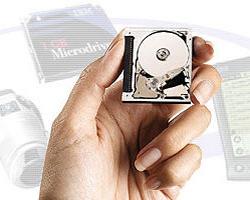A New Source of Spin Control

Electrons are underappreciated. Every electronic device depends on the electron’s charge, but few gadgets acknowledge–much less exploit–its property of spin. Researchers in the field of spintronics are developing devices that use “spin polarized” electric currents–currents dominated by either spin up or spin down electrons. Now a team reports in the 7 May PRL that they can generate such currents simply by shining light on the right material. They show that in a broad class of nanostructures, circularly polarized light creates a spin polarized current. The technique may help researchers learn more about spin-based effects and could also lead to a new detector for circularly polarized light.
Spintronics physicists already know that circularly polarized light–where the electric field spins like a propellor, rather than remaining in a single plane–can produce more of one spin type than the other. For example, each photon of right circularly polarized light carries one unit of angular momentum. Add that to a spin down electron with a spin of -1/2, and you get a spin up electron with +1/2 spin units. A steady stream of such photons can create an imbalance in the spin populations.
Many spintronics experiments use so-called quantum well structures–thin layers of one semiconductor type sandwiched between thicker layers of another type. The middle layer, which acts like a trough that traps electrons, can be less than 20 nm across, narrow enough to restrict electron motion in that direction. Sergey Ganichev of the University of Regensburg in Germany and his colleagues took advantage of a rarely used property of many common quantum well materials: Thanks to asymmetries in the crystal lattice, electron transport theory says that spin up electrons confined in these wells have an average velocity that is not zero, and the spin down average velocity is in the opposite direction. If one spin population can be made larger than the other, a spin polarized current flows automatically.
Ganichev and his colleagues aimed pulses of circularly polarized, far infrared laser light at the transparent top surfaces of quantum well “sandwiches” made of standard semiconducting materials. The light generated a spin polarized current perpendicular to the laser beam, even when the beam hit at an oblique angle. The direction of current showed that although the laser imparts angular momentum (spin) to the electrons, it does not provide any linear momentum. The team also showed that reversing the circular polarization direction reversed the current direction. The light-electron system acts “like a wheel on a road,” says Ganichev. “If you change the rotation direction, then you change the linear direction, too.”
The team has already registered for a patent for a high-speed detector of circularly polarized light based on the experiments, but Ganichev believes the technique will help further spintronics research. “One now has very good access to investigate the spin dynamics,” he says.
Bruce McCombe, of the State University of New York in Buffalo, says the technique is interesting because it generates a spin polarized current at room temperature and without any externally applied electric or magnetic fields. Spintronics researchers are looking for good ways to make such currents, he says. The intense infrared source the system requires may be impractical for applications, but McCombe plans to ask his research group to study the work in more detail, in case some modification of it may be feasible in a device.


